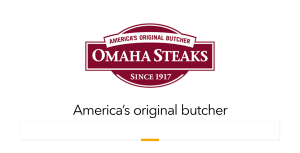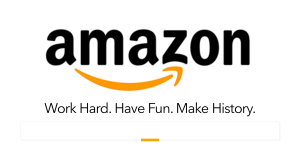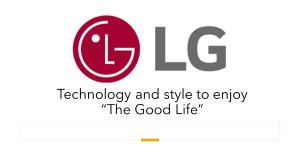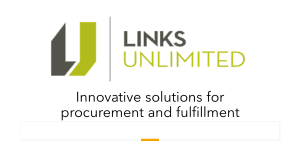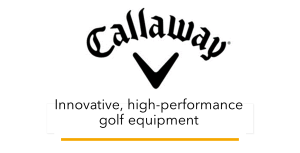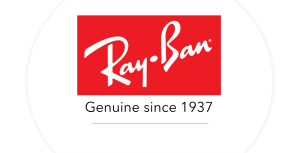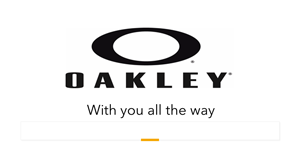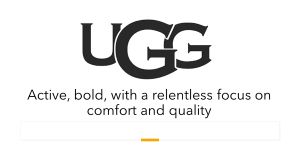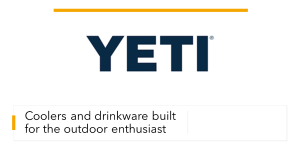IRF Academic Study: Tap the Power of Peer-to-Peer Recognition to Drive Change
This academic study authored by Allan Schweyer, Chief Academic Advisor for the Incentive Research Foundation, finds that peer-to-peer recognition programs can be among the most effective means of driving change in an organization.
 In this recently published Incentive Research Foundation paper, Academic Research in Action: Social Reinforcement and Peer Recognition Networks, author Allan Schweyer asserts that the peer-to-peer recognition platforms used by many organizations can also help drive critical organizational values and reinforce cultures.
In this recently published Incentive Research Foundation paper, Academic Research in Action: Social Reinforcement and Peer Recognition Networks, author Allan Schweyer asserts that the peer-to-peer recognition platforms used by many organizations can also help drive critical organizational values and reinforce cultures.
Based on social reinforcement theory, Schweyer says, peer-to-peer networks can function like “strong tie networks” better for encouraging behavior change or the sharing of more complex ideas because they feature “bigger bridges,” a greater number of and closer ties between the people in those networks. He says that “strong tie networks,” such as an organization’s peer-to-peer recognition platform or even its Slack community, are more powerful than what he calls “weak-tie networks,” such as Facebook or LinkedIn, “which are excellent for the spread of basic information that requires little critical thinking.”
Basically, the research report finds that peer-to-peer recognition can be a powerful way to leverage the benefits of social reinforcement theory. He writes, “As every experienced reward program designer knows, incentives intended to change people’s thinking, behavior, or decision-making, require careful thought. Don't design according to your hunches alone. Experiment. Think deeply, for example, about the kind of peer interaction and appreciation that can promote positive behaviors by focusing attention on the people exhibiting those behaviors. In other words, proactively manage and monitor peer networks to ensure that employees are appreciating and rewarding the things you want them to.”
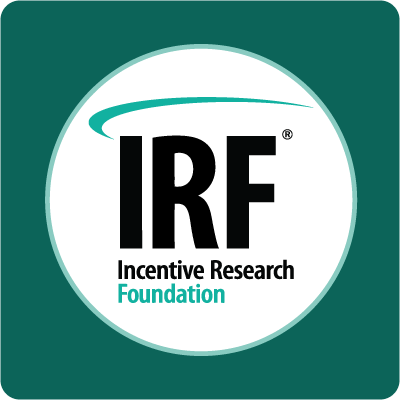 What makes peer-to-peer recognition so powerful, he adds, is that they “include the element of appreciation and maybe even tangible rewards through points.” So rather than just using the programs to allow people to randomly thank one another or show appreciation, design their use so that they strategically highlight the behaviors or actions the organization is trying to promote. Behavior change and culture change are really hard. But if you buy the idea that strong networks and wide bridges are a good vehicle for defusing or spreading these ideas, you will realize that your peer-to-peer reward networks provide a powerful means to promote action.”
What makes peer-to-peer recognition so powerful, he adds, is that they “include the element of appreciation and maybe even tangible rewards through points.” So rather than just using the programs to allow people to randomly thank one another or show appreciation, design their use so that they strategically highlight the behaviors or actions the organization is trying to promote. Behavior change and culture change are really hard. But if you buy the idea that strong networks and wide bridges are a good vehicle for defusing or spreading these ideas, you will realize that your peer-to-peer reward networks provide a powerful means to promote action.”
To illustrate his point, he suggests that a peer-to-peer program can be used to address tactical issues, such as a new product launch going badly because the sales team is having difficulty understanding the product. “In this case, the company can use the peer-to-peer program to promote quick learning videos that enable people to earn points for viewing the videos or passing a product knowledge quiz. Or, it can highlight salespeople who are successfully selling the new product and how.” The same approach he adds, can be used to promote any behavior or action deemed important by an organization to reinforce values.
“At a time when many people are now working at home multiple days a week, there’s a huge impact on culture. This research shows that these platforms can be used to encourage collaboration, stay in touch, and remain focused on what’s important to the organization no matter where people are working.”
Schweyer believes the big opportunity now for incentive and recognition professionals is to use the research from the IRF and other sources to become “true performance consultants,” and not just focus on the rewards or technologies used to promote them.
Click here to get RRN news delivered each week.
Education, Certifications, and Information to Activate
Brand Media and Enterprise Engagement
A complete learning, certification, and information program and a course syllabus for educators.
Resources: The Brand Media Coalition, the only guide to the story-telling power of brands and where to source them for business, event, promotional gifting, and rewards and recognition. Enterprise Engagement Solution Provider Directory. The only directory of engagement solution providers covering all types of agencies and tactics as well as insights on how to select them.
Communities: The Enterprise Engagement Alliance and Advocate and the Brand Media Coalition free resource centers offering access to the latest research, news, and case studies; discounts, promotions, referrals, and commissions, when appropriate to third-party solution providers from participating coalition solution provider members.
Training and Certification
Enterprise Engagement Alliance Education: Certified Engagement Practitioner; Advanced Engaged Practitioner, and Certified Engagement Solution Provider learning and certification programs on how to implement Stakeholder Capitalism principles at the tactical level.
International Center for Enterprise Engagement: The only training and certification program for ISO 30414 human capital reporting and ISO 10018 quality people management certification.

The EEA offers a complimentary course syllabus for educators.
In Print:
This is the definitive implementation guide to Stakeholder Capitalism, written specifically to provide CEOs and their leadership teams a concise overview of the framework, economics, and implementation process of a CEO-led strategic and systematic approach to achieving success through people. (123 pages, $15.99)
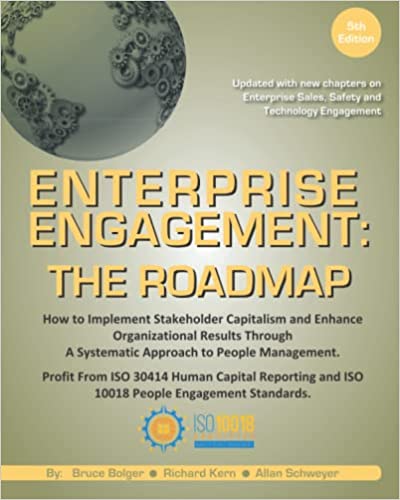
The first and most comprehensive book on Enterprise Engagement and the new ISO 9001 and ISO 10018 quality people management standards. Includes 36 chapters detailing how to better integrate and align engagement efforts across the enterprise. (312 pages, $36.)
Online:
10-minute short course: click here for a 10-minute introduction to Enterprise Engagement and ISO standards from the Coggno.com learning platform.
Services:
• The Engagement Agency at EngagementAgency.net, offering: complete support services for employers, solution providers, and technology firms seeking to profit from formal engagement practices for themselves or their clients, including Brand and Capability audits for solution providers to make sure their products and services are up to date.
• C-Suite Advisory Service—Education of boards, investors, and C-suite executives on the economics, framework, and implementation processes of Enterprise Engagement.
• Speakers Bureau—Select the right speaker on any aspect of engagement for your next event.
• Mergers and Acquisitions. The Engagement Agency’s Mergers and Acquisition group is aware of multiple companies seeking to purchase firms in the engagement field. Contact Michael Mazer in confidence if your company is potentially for sale at 303-320-3777.
Enterprise Engagement Benchmark Tools: The Enterprise Engagement Alliance offers three tools to help organizations profit from Engagement. Click here to access the tools.
• ROI of Engagement Calculator. Use this tool to determine the potential return-on-investment of an engagement strategy.
• EE Benchmark Indicator. Confidentially benchmark your organization’s Enterprise Engagement practices against organizations and best practices.
• Compare Your Company’s Level of Engagement. Quickly compare your organization’s level of engagement to those of others based on the same criteria as the EEA’s Engaged Company Stock Index.
• Gauge Your Personal Level of Engagement. This survey, donated by Horsepower, enables individuals to gauge their own personal levels of engagement.
For more information, contact Bruce Bolger at Bolger@TheEEA.org, 914-591-7600, ext. 230.

.jpg)




